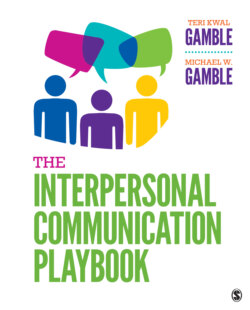Читать книгу The Interpersonal Communication Playbook - Teri Kwal Gamble - Страница 126
На сайте Литреса книга снята с продажи.
Perceptual Sets and Selectivities
ОглавлениеThe lessons that our family, friends, and culture teach us condition us to perceive stimuli in set ways, effectively helping us to construct our social reality. These organizational constructions are known as perceptual sets. They are established gradually over time and help us decide which stimuli we should attend to. For example, if we are raised in a family that values education, we are likely to perceive learning-related activities more positively than we would if we had been raised in a family that dismisses education as unimportant. Likewise, if we grow up in a home where a particular religious or ethnic group is consistently demeaned, we would be more likely to believe in that group’s inferiority.34 Because past lessons and experiences are part of us at every new encounter, our past influences our interpretations and evaluations of the present.
Education and culture also influence perception, helping us make sense of our environment by selecting stimuli significant to us. For example, American culture supports the open expression of opinion, whereas in Japanese culture, talk may be considered a sign of shallowness.35 Therefore, an American may perceive long silences to be embarrassing and uncomfortable, but a Japanese person accepts periods of silence as perfectly normal. Culture helps to condition us to communicate in distinctive ways. As you will see later in this chapter, it also influences our communication preferences and styles.
Like education and culture, our motivation or internal state also causes us to exhibit perceptual preferences. For instance, hungry people are more apt to see food when shown a series of ambiguous pictures than are individuals who are full. Similarly, our financial position can influence our perceptions of matters such as the U.S. welfare system and clothing fads.
Try This: Lessons Learned
1 To better understand the concept of perceptual sets, quickly read the statements that appear in the following triangles.
2 After you have read them, examine each more carefully. Did you notice the second the or a in the statements the first time? Because we are conditioned to see words in groups or clusters and not to read individual words, we actually can fail to see what’s before our eyes. What lessons about social perception can you draw from this experience?
3 How do preconceptions or prejudgments (perceptual sets) affect your ability to relate to others? For example, how might your judging a person to be hostile affect your assessment of behavior the person displays that others might see as ambiguous?
